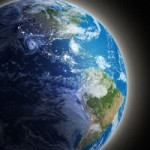 Having wrapped up the final edits to my novel Foreseen and taken a break for a couple of weeks, I find myself itching to get back to work – and in particular to work on an entirely different novel. Sarandipity is set in the future, and mostly on a different planet which, while inhabited by humans, has been cut-off from the rest of our culture for a long time. As a result, before I ever start writing I must build two worlds – what our “Earth” culture might look like in a few hundred years, and how Xian culture would have diverged.
Having wrapped up the final edits to my novel Foreseen and taken a break for a couple of weeks, I find myself itching to get back to work – and in particular to work on an entirely different novel. Sarandipity is set in the future, and mostly on a different planet which, while inhabited by humans, has been cut-off from the rest of our culture for a long time. As a result, before I ever start writing I must build two worlds – what our “Earth” culture might look like in a few hundred years, and how Xian culture would have diverged.
World building is a giant game of logic. Tinkering with pieces like educational goals and structures, then seeing how that choice affects other elements of the society, such as social lassitude or religion or economic structure. The firing of a few synapses in my brain determines the available environmental resources, providing the society with golden opportunities or insurmountable obstacles – or sometimes both. The worlds become a playground where I can experiment, observe the ramifications, tear down and start over – like building sand castles. In short, it is a blast.
However, world building must also be rigorous – covering far more than is likely to come out on the pages of the novel. If you stop with what is minimally necessary, the richness and cohesion that makes the setting or society feel real will not be there. So, what all do you need to decide when world building? Here’s a list to think about that I have derived from many sources, but wish to expressly credit author Hilari Bell, who provided me once with a list which, if memory serves me, is not too far off from this one.
HABITAT:
- terrain
- distances
- potable water
- navigable water
- location and amount of tillable land/type of crops
- “farm” animals
- minerals/fuel sources
- climate/seasons/weather variability
- wildlife
- predators/threats
- plant life
ECONOMY:
- agrarian/manufacturing/service/information/government or mixed
- technological status
- power source/availability
- capitalist/socialist/communist basis
- method of determining distribution of resources
- currency
- transportation methods (this may not seem to belong under economy at first blush, but has a huge impact of the economic functioning of the world)
CULTURAL :
- history (I start with this, which informs many of the other decisions)
- religious beliefs, use and depth of religion
- taboos and superstitions
- etiquette
- marriage/love/sex/child-rearing norms and customs
- symbols/pageants
- holidays
- pets
- societal segments and respective rights/criteria for advancement
- educational methods and scope
- calendar/timekeeping method
- architectural styles
- clothing/hairstyles/hygiene
- art/sports and entertainment
- military/law enforcement/justice system
- enemies/allies/attitudes and experience with warfare
- social strife
- swear words
This list will never be complete, and if you are creating a world that is inhabited by non-humans, there are vastly more decisions to make about their physiology and how if affects all the choices above. So, if you are an aspiring writer and plan to place your next story on some other planet or a distant time, have at it – but make sure you thoroughly build your world first. Your readers will thank you!





